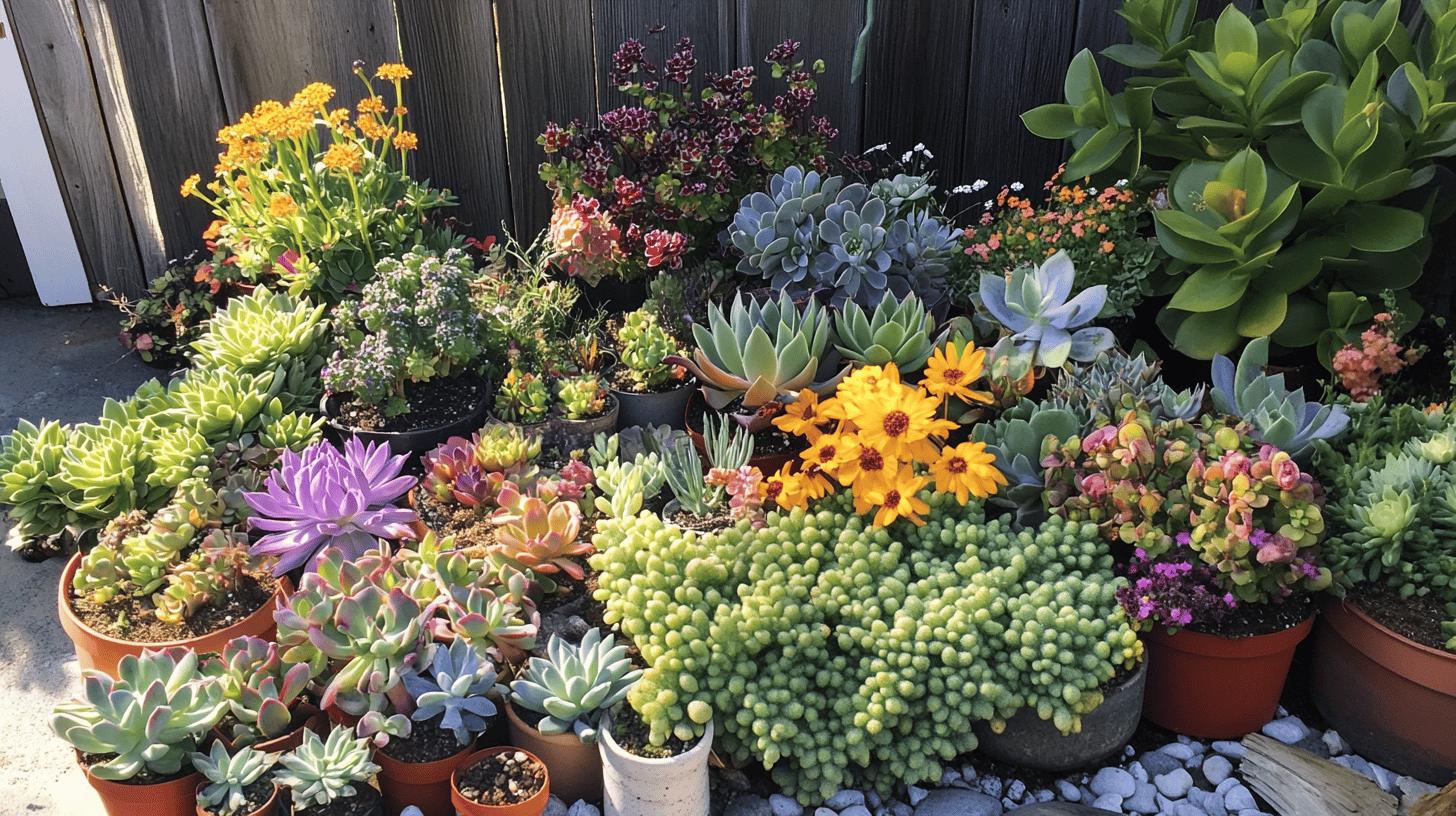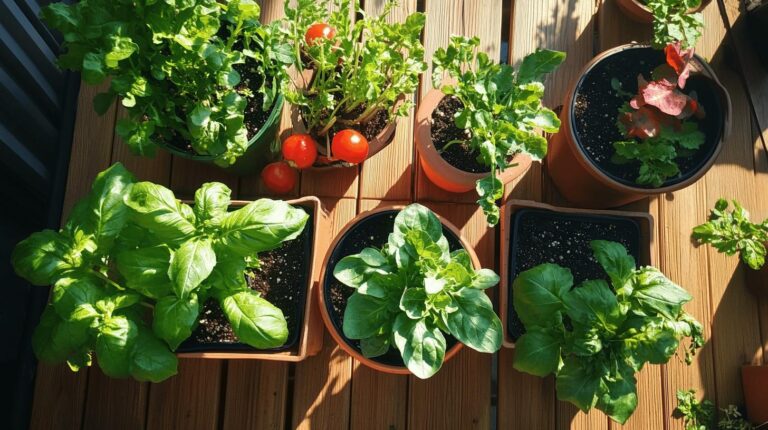Transform Your Backyard: Best Ground Cover Options for Stunning Design
Ever glanced at a vibrant backyard and wished yours could be just as inviting without all the hassle? Ground cover plants might be the answer you’re looking for. They’re the under-appreciated heroes of backyard design, effortlessly transforming vast, empty spaces into lush, lively canvases. With so many options available, you might find yourself wondering which ground cover would thrive best in your outdoor sanctuary. Let’s dive into what makes these plants so wonderful for backyard landscaping and explore how to pick the perfect ones for your unique setting.
Understanding Ground Cover Plant Selection
Ground cover plants are the unsung heroes of backyard design, serving the dual purpose of beautifying spaces and performing practical functions like erosion control. These plants are adept at putting down roots and fostering new growth, making them perfect for quickly covering large areas. When selecting ground covers, it’s crucial to consider factors such as your specific climate, the amount of sun your garden receives, soil type, and water availability. These factors ensure that your chosen plants will thrive and provide the desired effect in your backyard.
- Climate compatibility
- Sun exposure levels
- Soil type and quality
- Water availability
- Maintenance requirements
The role of climate and environmental conditions in choosing ground cover plants cannot be overstated. The success of your garden design hinges on selecting plants that are well-suited to the specific conditions of your backyard. For instance, a sun-loving plant won’t fare well in a shady corner, and a water-intensive species might not be suitable for an area prone to drought. By understanding the unique aspects of your environment, you can make informed decisions that contribute to a thriving and visually pleasing garden.
- Is the plant suited to the local climate?
- Does the plant thrive in the available sunlight?
- Are the soil and water conditions adequate for its growth?
Low-Maintenance Ground Cover Options
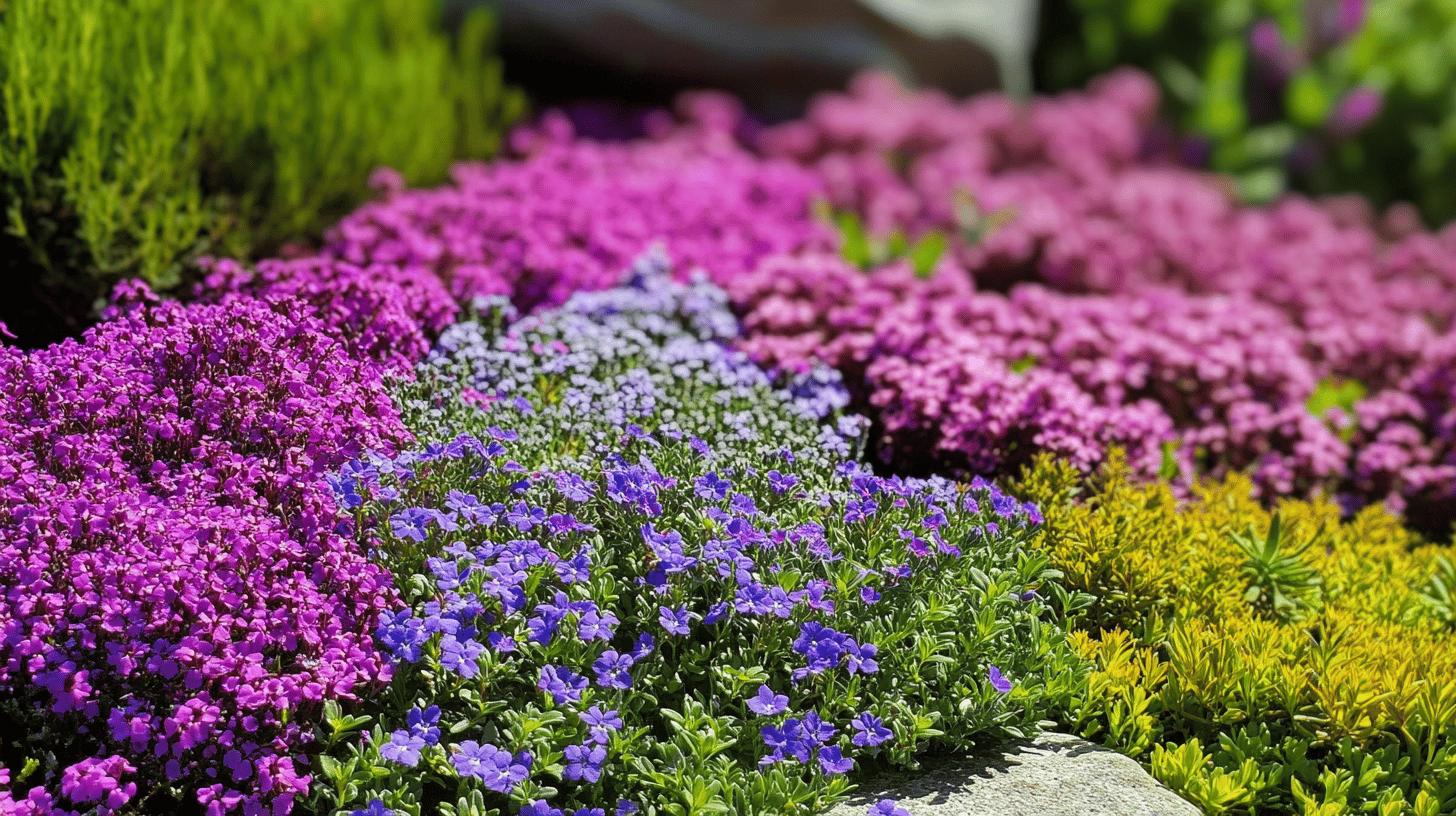
Low-maintenance ground cover plants are a dream come true for anyone looking to enjoy their backyard without the constant upkeep. These plants are designed to thrive in challenging conditions like poor soil and drought, meaning they require less water and attention. By choosing low-maintenance options, you can spend more time relaxing and less time working in the garden. Plus, they offer a practical alternative to traditional grass lawns, which often demand more care and resources.
- Creeping Thyme: A tough yet fragrant option that forms dense mats in sunny areas. It’s perfect for poor soil and blooms with lovely pink, white, or purple flowers.
- Periwinkle: Known for its fast growth and vibrant white, pink, or purple flowers in spring, this vine adapts well to various light conditions and requires minimal care.
- Hens and Chicks: These succulents are excellent for rock gardens and sunny areas, thriving with little water and maintenance.
- Stonecrop: A heat and drought-tolerant succulent that offers tiny blooms in early summer, ideal for adding texture and interest.
- Dwarf Mondo Grass: This low-maintenance plant creates a lush, green carpet and can tolerate both sun and shade.
- Bugleweed: With its adaptable nature, it forms mats of green or burgundy foliage, producing pink or purple flowers and thriving in sun or shade.
By integrating low-maintenance ground covers into your backyard, you can effectively replace traditional grass lawns. These alternatives not only reduce the need for frequent mowing and watering but also provide a sustainable and eco-friendly solution. Imagine a backyard that’s not only beautiful but also easy to care for—giving you the freedom to enjoy your outdoor space without the hassle of constant lawn maintenance.
Drought-Tolerant Ground Covers for Arid Climates
Selecting the right ground cover plants for arid climates is crucial for creating a sustainable and beautiful backyard without excessive water use. Drought-tolerant plants like Hens and Chicks and Stonecrop are excellent choices as they thrive in dry conditions, requiring minimal watering. These resilient plants not only help conserve water but also provide a lush and vibrant appearance to your outdoor space. By opting for drought-tolerant ground covers, you can enjoy a thriving garden even in areas with water restrictions.
| Plant Name | Sunlight Requirements | Watering Needs |
|---|---|---|
| Hens and Chicks | Full Sun to Partial Shade | Low |
| Stonecrop | Full Sun | Low |
| Blue Star Creeper | Full Sun to Part Shade | Moderate |
Integrating drought-tolerant ground covers into a water-wise backyard design can be both practical and aesthetically pleasing. These plants can be strategically placed in areas that receive full sun or where water conservation is a priority. Combining them with other native or low-water plants can create a cohesive and sustainable landscape. The use of mulch and drip irrigation systems can further enhance their growth while conserving water, ensuring your garden remains vibrant and healthy even in the driest conditions.
Colorful and Decorative Ground Cover Choices
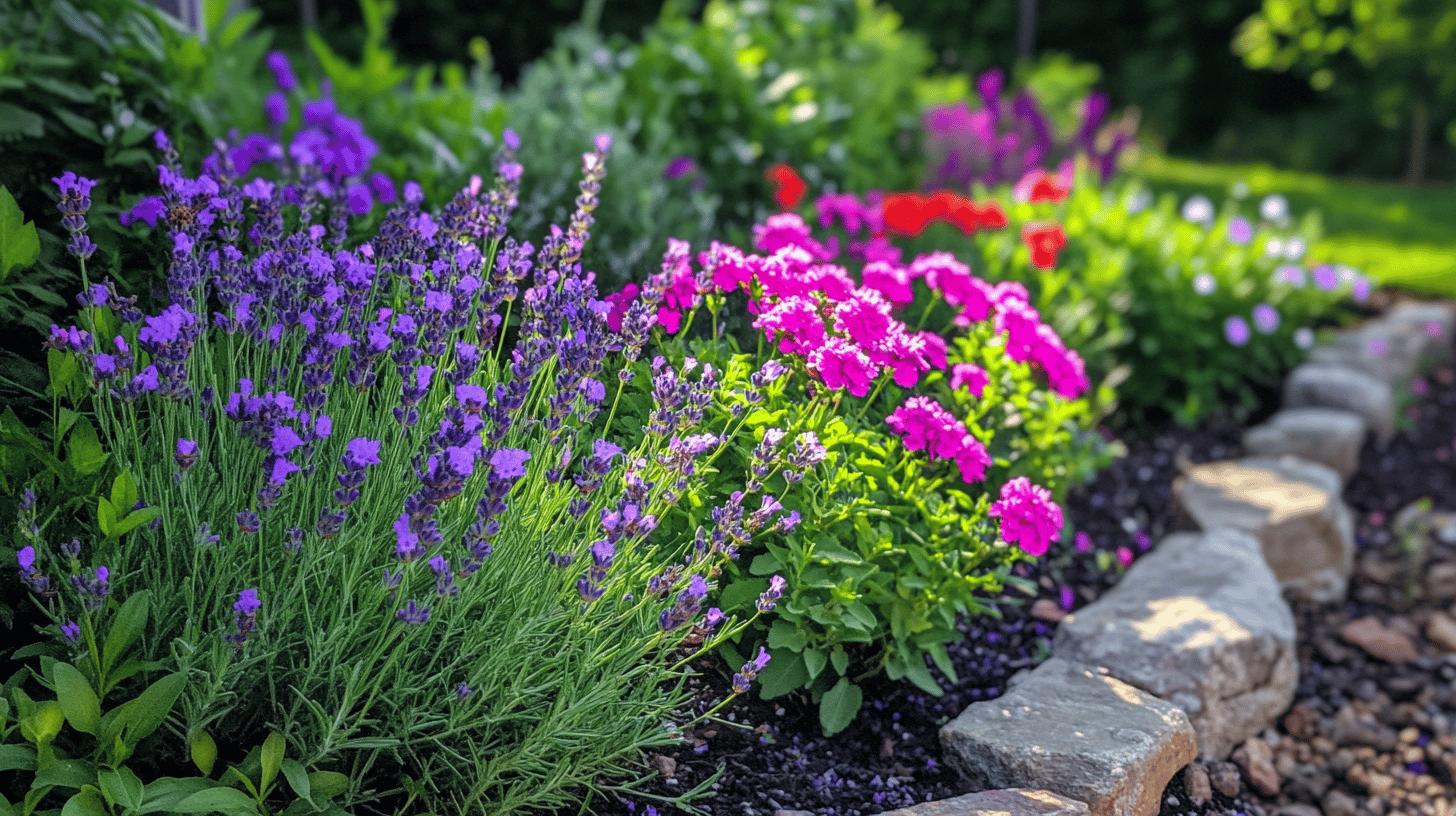
Colorful ground covers can transform a backyard into a vibrant tapestry of hues and textures, making it a feast for the eyes. These decorative plants not only enhance the aesthetic appeal of outdoor spaces but also add layers of interest through their dynamic colors and blooming patterns. Incorporating colorful ground covers like Lavender and Dianthus can turn a plain garden into a lively retreat. Their vivid blooms and lush foliage create a sense of movement and life, offering a soothing and beautiful environment to enjoy.
- Lavender: This classic ground cover is known for its fragrant purple blooms that appear in the summer, making it a popular choice for adding both color and scent to gardens.
- Dianthus: Often referred to as “pinks,” this plant produces sweet-smelling, clove-like flowers in shades of pink, white, and red, creating dense mats that are perfect for borders.
- Creeping Thyme: With its delicate pink, white, or purple flowers, creeping thyme forms a colorful mat that thrives in sunny areas, adding a splash of color to pathways and rock gardens.
- Periwinkle: Featuring vibrant white, pink, or purple flowers, periwinkle is a fast-growing vine that can bring a burst of color to shady areas.
- Stonecrop: This succulent offers tiny, colorful blooms in the early summer, with foliage that ranges from green to blue, providing a multicolored display.
Creating Visual Interest with Color
Strategically placing colorful ground covers can enhance the visual impact of your backyard, drawing the eye to key areas and creating focal points. Consider planting these vibrant options in clusters to form eye-catching patches of color that can highlight specific garden features or pathways. Mixing different species with varying bloom times ensures continuous color throughout the seasons. Additionally, using contrasting colors can create a dynamic visual effect, while complementary hues can provide a more harmonious and calming appearance. By thoughtfully arranging these ground covers, your garden can become a vibrant and inviting space that reflects personal taste and style.
Ground Covers for Shade and Sun
Matching ground cover plants with the right light conditions in your backyard is crucial for their health and beauty. Whether your garden boasts sun-drenched spots or shady nooks, choosing ground covers that thrive in these specific conditions ensures robust growth and a harmonious look. The right plants can transform these areas into lush, vibrant spaces, enhancing both the aesthetic and ecological value of your garden.
Shade-Loving Ground Covers
In areas where sunlight is limited, selecting shade-loving plants is essential. These plants are adapted to thrive in the dappled sunlight under trees or in other shaded areas, offering lush greenery and sometimes colorful blooms to brighten up darker spots.
- Japanese Painted Fern: Known for its silvery fronds with maroon accents, this fern adds a mystical effect to shaded gardens with its delicate foliage.
- Pachysandra: This ground cover features glossy green leaves and small white flowers, thriving admirably in part sun to full shade environments.
- Lady’s Mantle: A favorite in cottage gardens, its soft, scalloped leaves collect dew beautifully, and it produces chartreuse blooms in late spring.
Sun-Loving Ground Covers
For areas basking in full sunlight, sun-friendly ground covers are a must. These plants not only withstand harsh sunlight but often require it to produce their best growth and flowering, adding vibrancy to your sunlit garden areas.
- Creeping Thyme: Perfect for sunny spots, this fragrant herb forms dense mats and blooms in pink, white, or purple, adding color and scent to pathways and borders.
- Stonecrop: A heat-tolerant succulent with tiny blooms, it thrives in full sun, providing texture and color with minimal care.
- Lavender: This classic sun-lover is famed for its aromatic purple blooms, offering both beauty and fragrance when planted in sunny, well-drained areas.
Fast-Growing Ground Covers for Quick Coverage
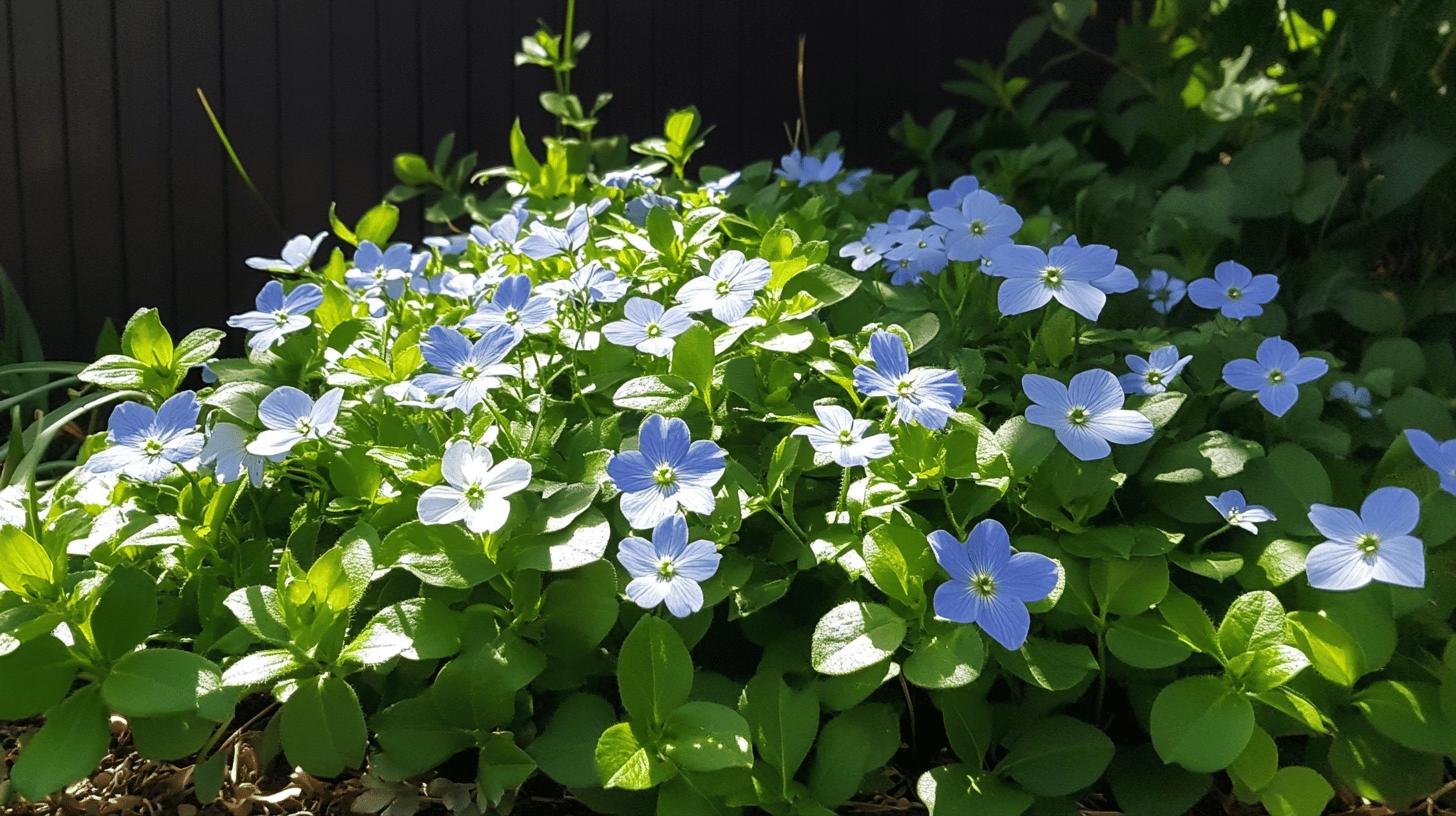
Fast-growing ground cover plants are a fantastic solution for those looking to quickly enhance their backyard’s appearance without breaking the bank. These plants cover large areas swiftly, reducing the need for extensive maintenance and offering immediate aesthetic improvements. By choosing fast-growing varieties, you can fill empty spaces, control erosion, and create a lush, unified look across your yard in no time. This makes them an ideal choice for anyone seeking affordable ground cover ideas that don’t compromise on beauty or functionality.
- Blue Star Creeper: Known for its tiny, star-shaped blue flowers and dense, green foliage, this plant thrives in full sun to partial shade and establishes rapidly.
- Creeping Jenny: With its vibrant yellow-green leaves, Creeping Jenny spreads quickly, adding brightness to any garden space, especially in moist, sunny areas.
- Ajuga: This adaptable ground cover features rich, dark foliage and striking blue flower spikes, forming a thick mat that suppresses weeds efficiently.
- Sweet Woodruff: Ideal for shady areas, it produces delicate white flowers and spreads fast, creating a soft carpet of green under trees or in shaded garden corners.
Fast-growing ground covers offer a budget-friendly way to achieve a well-manicured and cohesive garden. Their rapid expansion reduces the need for multiple plantings, saving both time and money. Additionally, these plants often require less intensive care once established, making them an efficient choice for gardeners who want a beautiful backyard without excessive effort.
Erosion Control and Slope Stabilization
Ground covers play a vital role in preventing soil erosion on slopes by creating a protective layer that holds the soil in place. Their root systems bind the soil, reducing runoff and minimizing the loss of fertile topsoil. This makes them an excellent choice for areas prone to erosion, such as hillsides and embankments. By choosing the right ground cover plants, you can maintain soil health, promote water retention, and enhance the overall stability of sloped areas in your backyard.
- Creeping Juniper: This low-growing evergreen offers year-round coverage with its extensive root system, perfect for stabilizing slopes.
- Crown Vetch: Known for its deep roots and vibrant pink flowers, this plant provides excellent erosion control on steep banks.
- Periwinkle: With its rapid spread and dense mat formation, periwinkle effectively protects against soil erosion, particularly in shady areas.
Combining ground covers with taller plants like shrubs and trees can further enhance slope stabilization. The taller plants add an additional layer of support and structure, while their roots penetrate deeper into the soil, offering extra anchorage. This combination not only aids in controlling erosion but also creates a diverse and visually appealing landscape. By integrating various plant types, you can achieve a balanced ecosystem that manages water runoff and provides habitat for beneficial wildlife, enhancing both the functionality and beauty of your garden slopes.
Seasonal and Perennial Ground Cover Options
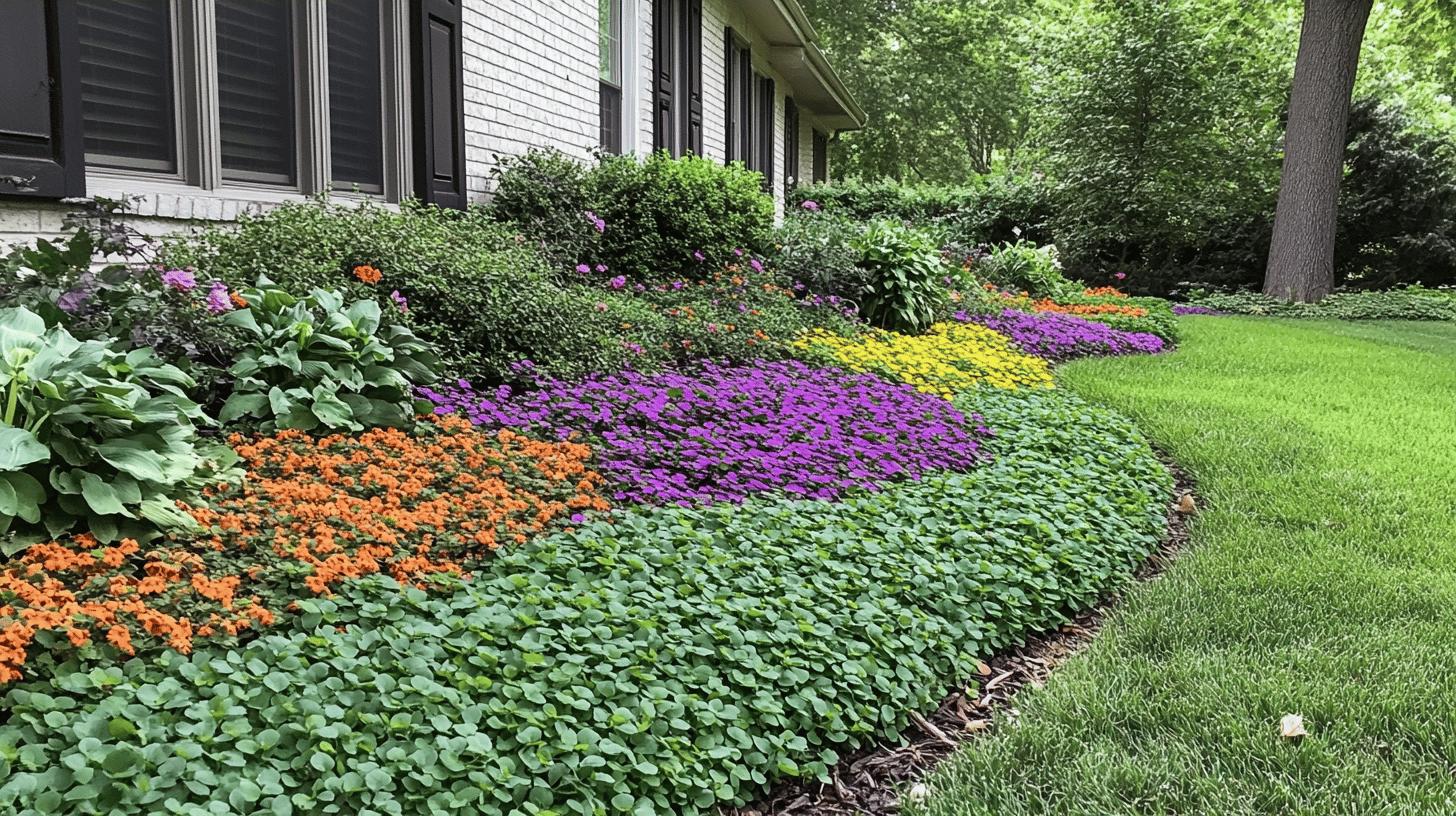
Perennial ground cover plants are a gardener’s ally, offering year-round greenery and reducing the need for constant replanting. They provide a stable, lush appearance that enhances the aesthetic continuity of your garden across all seasons. By choosing perennial options, you ensure that your backyard remains vibrant and inviting, even during colder months when many other plants may not thrive.
- Pachysandra: This evergreen ground cover thrives in shaded areas, spreading with ease and producing small white flowers in early spring.
- Ajuga: Known for its striking blue flower spikes and dense foliage, Ajuga is great for suppressing weeds and adds a burst of color.
- Creeping Jenny: With its bright yellow-green foliage, Creeping Jenny quickly forms a lush carpet, perfect for sunny or partially shaded areas.
- Liriope: Often used as a border plant, Liriope offers grass-like leaves and purple flower spikes, thriving in both sun and shade.
Seasonal ground covers add an ever-changing palette to your backyard, providing dynamic visual interest throughout the year. By incorporating plants that bloom at different times, you can ensure continuous color and texture shifts that keep your garden looking fresh and exciting. These seasonal changes can create focal points and highlight specific areas, allowing you to enjoy a lively and diverse landscape that evolves with each passing season.
Pet and Family-Friendly Ground Covers
Choosing the right ground covers for a backyard that’s frequented by pets and children is crucial for safety and durability. Non-toxic plants ensure the well-being of curious little ones and adventurous pets, while durable ground covers withstand the wear and tear of frequent foot traffic. Opting for these resilient and safe plants can transform your backyard into a welcoming and worry-free environment.
- Creeping Mazus: This versatile plant is not only non-toxic but also withstands light foot traffic. Its lush green foliage and delicate flowers make it both a safe and aesthetically pleasing choice.
- Irish Moss: Known for its soft, cushion-like texture, Irish Moss provides a gentle surface for kids to play on and is harmless if accidentally ingested by pets.
- Dutch Clover: This hardy ground cover is tough enough to handle rough play and is safe for pets, offering a natural and eco-friendly alternative to traditional lawns.
Sustainable and Native Ground Cover Choices
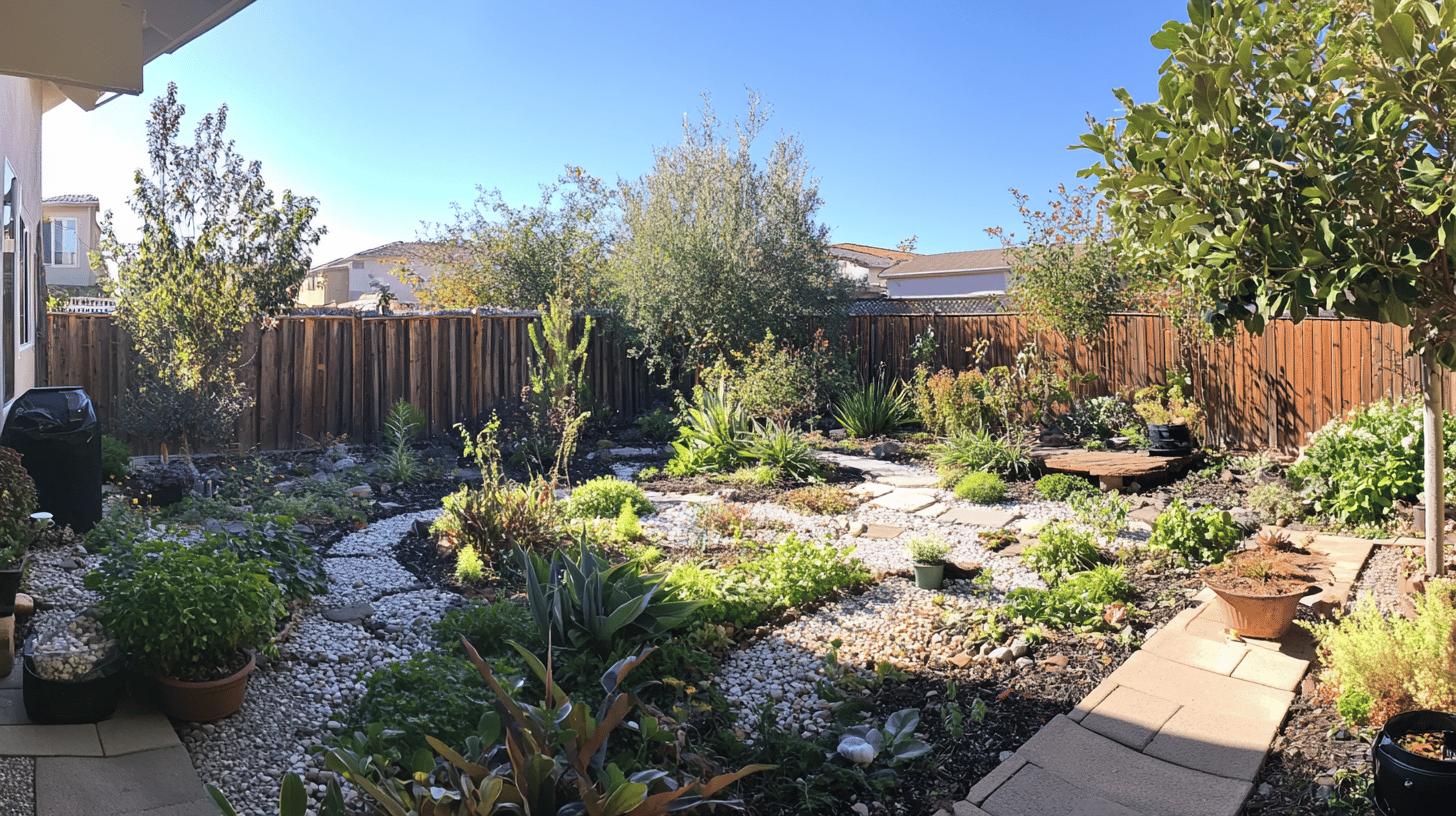
Incorporating native plants into your ground cover selection is an excellent way to foster sustainability in backyard design. Native plants are well-adapted to the local climate and soil conditions, which means they require less water and maintenance compared to non-native species. This natural adaptation not only supports local ecosystems by providing habitat for native wildlife but also reduces the need for chemical fertilizers and pesticides, promoting a healthier environment.
- Wild Strawberry (Fragaria virginiana): This native ground cover thrives in full sun to partial shade and is known for its small white flowers and red berries. It supports pollinators and provides food for birds and small mammals.
- Creeping Phlox (Phlox subulata): Ideal for sunny areas, this plant produces a carpet of vibrant flowers in spring, attracting butterflies and beneficial insects while requiring minimal water once established.
- Bearberry (Arctostaphylos uva-ursi): With its evergreen foliage and red berries, Bearberry is perfect for acidic soils and sunny spots. It helps prevent soil erosion and provides food for birds.
- Prairie Dropseed (Sporobolus heterolepis): This ornamental grass is suited for sunny dry areas, offering delicate seed heads that attract birds and add texture to the garden.
Choosing native ground covers is a key aspect of sustainable gardening practices. These plants enhance biodiversity by creating a habitat for local fauna and reducing the carbon footprint associated with garden maintenance. By minimizing the need for additional resources like water and fertilizers, native ground covers contribute to a more self-sustaining garden ecosystem. This approach not only supports ecological balance but also creates a beautiful, low-maintenance backyard that thrives in harmony with nature.
Creative Uses for Ground Covers in Backyard Design
Ground covers offer remarkable versatility in backyard design, serving both functional and decorative purposes. These low-growing plants can transform ordinary outdoor spaces into aesthetically pleasing landscapes by adding texture, color, and continuity. Their adaptability allows them to be used in various creative ways that enhance the visual appeal and functionality of your backyard. By strategically placing ground covers, you can create a cohesive design that integrates seamlessly with other garden elements.
- Between Pavers for Garden Paths: Utilizing ground covers between pavers softens the hard edges of pathways and adds a lush, green touch. Choose slow-growing varieties to prevent them from overtaking the pavers.
- Flower Bed Borders: Ground covers can define flower beds, acting as living borders. They provide a neat edge that keeps mulch in place while adding a beautiful contrast to taller plants.
- Rock Garden Accents: Incorporating ground covers in rock gardens can highlight the natural beauty of stones and add a splash of color. These plants thrive in well-drained soil, making them perfect companions for rocks.
Incorporating ground covers in these creative ways enhances the overall aesthetic of your backyard by providing structure and visual interest. They offer a unifying element that ties different areas of the garden together, creating a harmonious and inviting outdoor space. By experimenting with ground covers, you can showcase your personal style while optimizing the functionality and beauty of your backyard.
Final Words
Exploring the world of ground cover plants reveals their importance in backyard design, providing options that meet individual needs and environmental conditions. I covered the essentials of choosing appropriate ground covers, from low-maintenance and drought-tolerant selections to vibrant, decorative choices.
Considering these diverse factors when choosing ground cover for backyard design offers a host of creative possibilities. This approach not only achieves aesthetic goals but also supports sustainability and practicality.
I hope these insights inspire new ideas for enhancing your backyard. May your journey in creating stunning outdoor spaces be rewarding and enjoyable!
FAQ
How do I choose a ground cover?
Choosing the right ground cover involves considering specific factors like climate, sun exposure, soil type, and water availability. These factors ensure the plants thrive in your specific backyard environment.
What is the most low maintenance ground cover?
Creeping Thyme and Periwinkle are among the most low-maintenance ground covers. They require minimal care and perform well under challenging conditions like poor soil and drought.
What month is best to plant ground cover?
Fall and early spring are ideal times to plant ground covers. This timing allows plants to establish roots before the extreme temperatures of summer or winter.
What is the best ground cover to prevent weeds?
For effective weed prevention, plants like Creeping Juniper and Pachysandra are ideal. These options create dense coverage, making it difficult for weeds to thrive.
